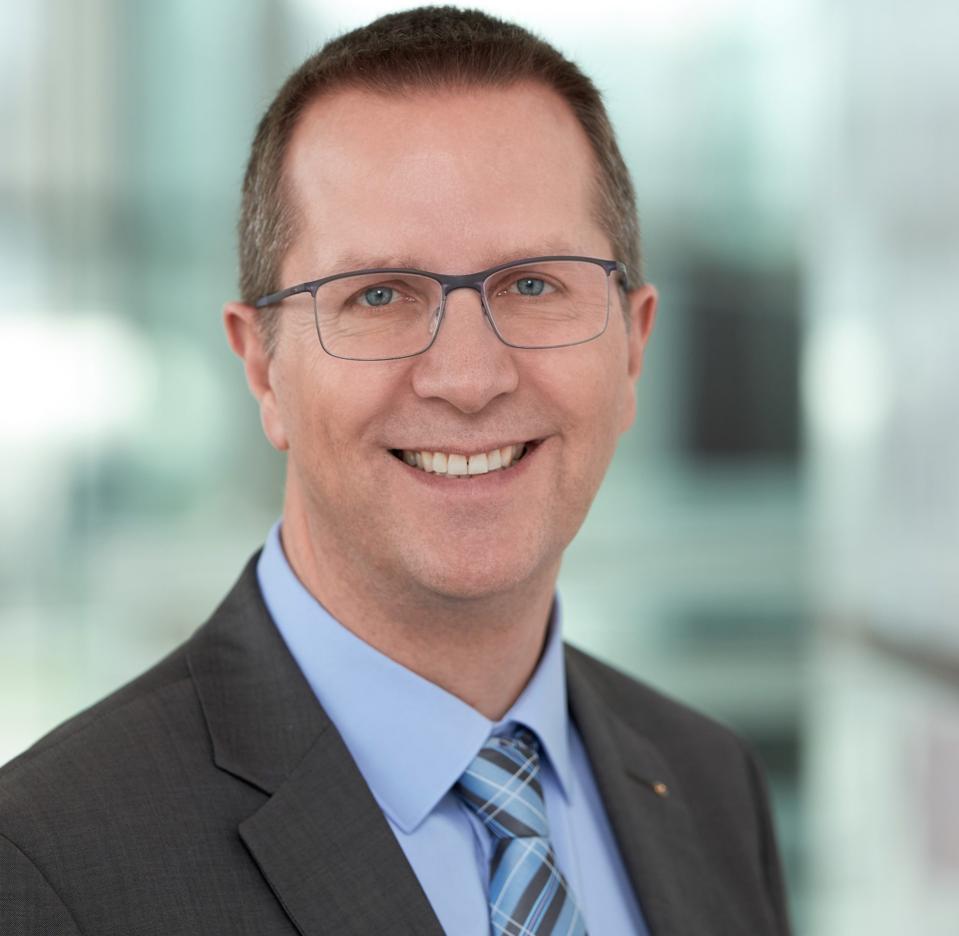
Software giant SAP is a global leader in many social responsibility realms. Daniel Schmid, SAP’s Chief Sustainability Officer, discussed how the company became a leader in international corporate sustainability efforts, why he’s optimistic and what’s next.
This interview has been edited and condensed for clarity.
Karen Walker: Daniel, you were in a senior management role for consulting at SAP, then you made a move to leading the sustainability efforts. What precipitated that shift for you?
Daniel Schmid: I received a call from an executive board member for SAP, and he said, “I associate you and your leadership style with sustainability – am I right?” You can imagine that I thought, “What would be the next question: ‘How do I manage the people in my area of responsibility? How did I always take care of their health, their safety? Or how do I focus on the mid- and long-term success?’” Then he told me he’d like me to be an integral part of a new project that the board decided to set up: to define sustainability, define a new organization and explain the first targets of understanding. He said, “You need to talk to all of our stakeholders, the customers, the investors, our employees and so on.” Then his final comment was, “Please say yes or no tomorrow morning between 7:30 and 8:00 a.m.!”
But I had already made the decision. I believe it’s a great privilege to be SAP’s Chief Sustainability Officer.
Walker: I imagine two things: first, getting a call from a board member out of the blue – but how wonderful to hear that this started, with urgency, at the board level, which is why it is so successful. Also, that he was generous enough to give you an entire evening to think about it, even if you didn’t need that long!
How did you go about setting goals and methods or even envisioning goals at SAP?
Schmid: It all started by asking tons of questions to our key stakeholders and listening to what they expect from SAP and where we should focus. That, of course, is a journey.
One early learning was it would not be the right approach to run our business strategy and, next to it, in a siloed fashion, a sustainability strategy. You need to embed sustainability in your core business strategy, and here we made significant progress. Now it’s a core pillar of SAP’s business strategy and has systemically evolved to become a core business topic for customers of strategic relevance.
Another key learning was around emissions reductions. We suggested to our executive board, in early 2009, our first emissions reduction target: bringing our emissions back to the 2000 levels by 2020. Do you know what they said? “It’s a great target, easy to remember. But we have a growth path. We want to be four times bigger than we were in 2000 (and we achieved that), so it’s a very ambitious absolute goal. How will we achieve it?” I told them I didn’t know but having such an ambitious goal requires being more creative and innovative. You must allocate your budgets in different ways and think differently. It was beyond our belief, but the executive board convinced us that it was the right way.
Walker: I love that they increased your goals by four-fold, clearly making a commitment to be a leader in this field.
Schmid: Then we realized that integration was necessary. In late 2013, our strategy’s new headline was to be the most innovative cloud provider – provide our offerings from a clean cloud. So, we had to integrate our environmental process with the business strategy.
Walker: Can you give an example of what you did?
Schmid: Since 2014, all the data centers, including the co-locations, are hyper-scalers run by green energy of high quality. We achieved the original emissions target in 2017, three years ahead of our goal.
The next logical step was to create a midterm target to be carbon neutral in our operations by 2025. Of course, with the pandemic and the lack of commuting and business travel, we saw a drop, but we also committed to not revert to our old behaviors. We pulled forward our 2025 target by two years. In 2021 we announced that we will be carbon neutral in our operations and selective scope three emissions by 2023. Earlier this year, we said our net-zero targets will cover the entire value chain by 2030.
We have more than 400,000 customers around the world in all industries. Many of those customers are running our systems successfully on their premises. The accelerated movement to the cloud will help us achieve that target (in addition to the other benefits of our cloud) because the on-premises load causes more than 80% of our value chain emissions.
Walker: A green cloud! What else are you doing internally to help reduce emissions? You mentioned going hybrid for the workplace as an example.
Schmid: We realized that you need to use the passion of your workforce. The people who are working at SAP love to work for a company that is a role model of a sustainable company. Ninety-four percent told us exactly that in the latest survey. We found a core group and used their passion to encourage others.
You must also create transparency. Quarter by quarter, we not only announce our financial performance, but our CEO Christian Klein and our CFO Luka Mucic are vocal to the press and analysts about our sustainability performance. On the same day as the financial announcement, our employees have access to our sustainability dashboard. They see their team’s data sorted by location, geography, organization and more. They learn from that, and they share best practices.
Walker: What specific metrics can a team see?
Schmid: The metrics consist of environmental and social data. We shouldn’t forget the social dimension. The journey always begins with human rights. They see diversity indicators and retention figures. They have environmental data on their carbon emissions caused by various emission sources, like business travel, rental costs, electricity in the offices and much more.
Walker: There’s such a large and urgent need in terms of sustainability.
Schmid: Yes, a clear shift is needed. We need to change how we do business because with efficiency alone, we will not solve today’s societal challenges. We need to do business differently. It’s so simple. Sustainability is such a great innovation driver and cost driver.
You can now observe different maturity levels of companies. There are still the ones who need to be compliant with existing regulations. But there’s also the next maturity level of companies seeing the beautiful business case.
Less energy consumption means less cost. Less waste means less cost. Higher employee retention means higher productivity and profitability. And then on the third level, these companies see sustainability as an innovation driver. These firms challenge their business models of how they produce and develop products.
These are the front runners. They design their products for a circular economy. They create new business models. They have an advantage in the market because we tend to choose more sustainable products and services.
If you have that holistic view, seeing not just from a risk perspective but also, from an opportunity perspective, that is beautiful.
Walker: One final question. The tagline for my consulting business is “up and to the right” because that’s the place on the two-by-two matrix that we always want to be. That has happened with your career. When we’re moving in that direction as a society for sustainability, how will you know?
Schmid: I would say there’s no concrete place because it is a journey. That’s a journey we need to accelerate, but I’m optimistic because every day I’m in conversations with customers, employees and investors. Investors are a very important stakeholder community. I see the difference now.
Of course, I wish that ten years ago, sustainability had been a core business topic, but now it is a core business topic of high strategic relevance. There is no CEO-to-CEO conversation anymore that does not touch on sustainability.
Because either there’s sustainable business or no business. In the past, when we had that conversation, I used “sustainable” or “profitable.” But it’s clear – only the companies who embed sustainability in their core business strategy will be successful for the long term.
That is what drives me and encourages me to stay optimistic. But urgent change is needed.
